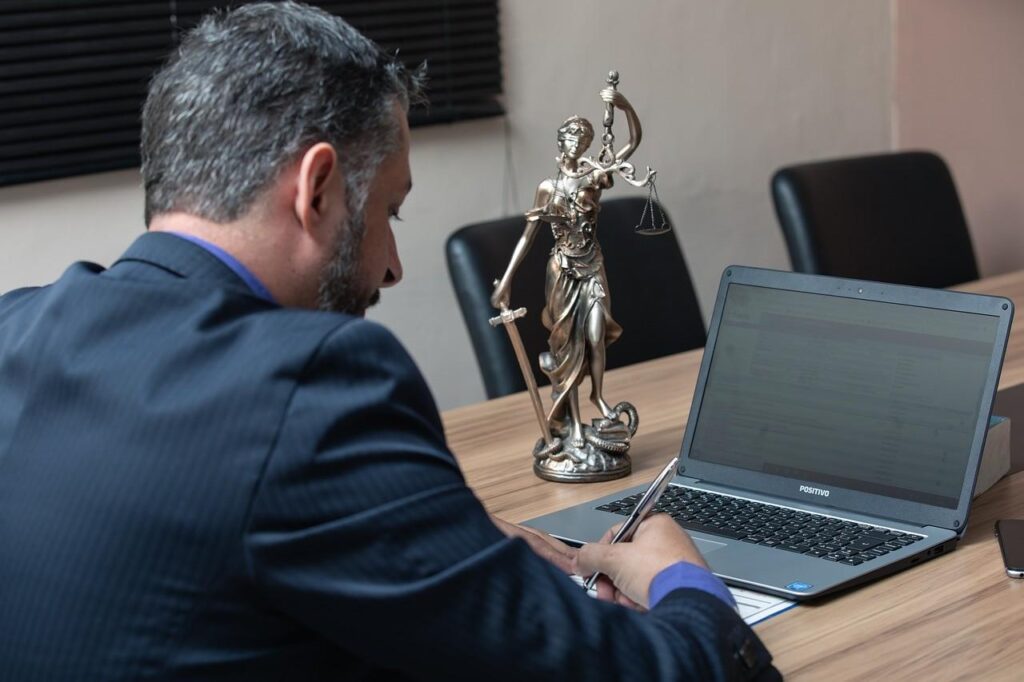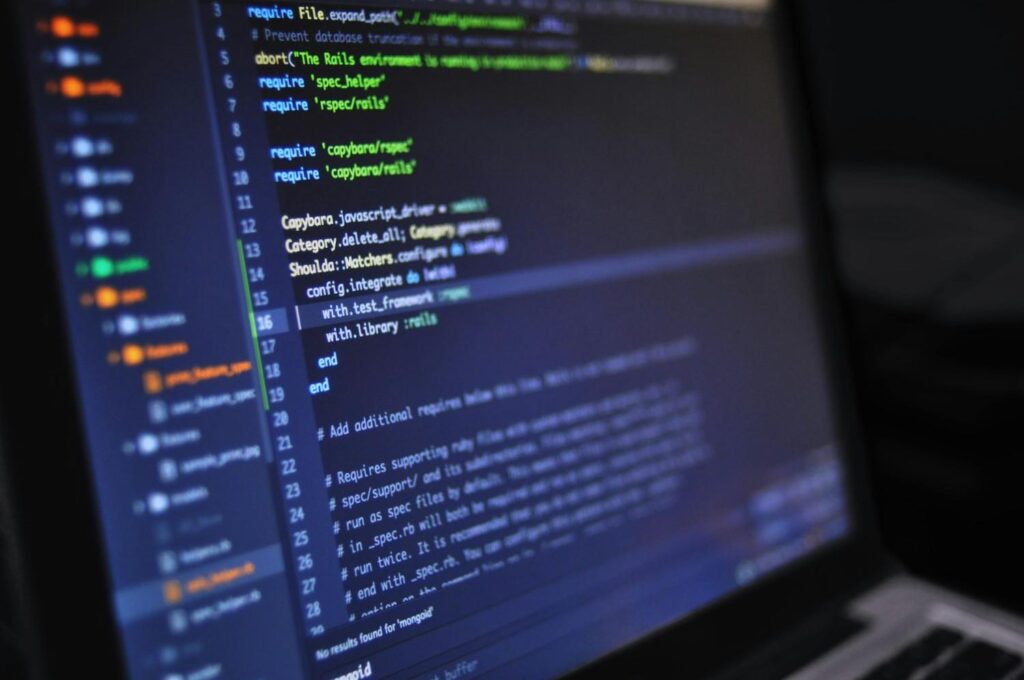We’re not just talking about how to speed up patent drafts or analyze prior art faster. We’re talking about whether AI should even be in the room when you’re making the calls. Whether using AI could put your license, your firm’s reputation, or your client’s entire IP portfolio at risk. Whether the ethical lines we’ve relied on for decades even hold up anymore.
The Thin Line Between Tool and Decision-Maker
The dividing line between where AI ends and where a lawyer’s judgment begins is dangerously thin—and growing thinner by the day.
While it’s tempting to delegate low-value drafting tasks to intelligent tools, the risk comes not from the automation itself, but from the slow erosion of active decision-making. In patent law, where each phrase can define the limits of a billion-dollar invention, this erosion has real consequences.
Accountability Cannot Be Outsourced
AI does not carry a law license. It does not face clients, judges, or cross-examinations. Yet every output it produces—whether it’s a suggestion for a dependent claim or an entire draft application—is ultimately signed off by a real human being.
That signature isn’t just procedural. It’s a declaration. It says, “I have reviewed this. I understand it. I stand by it.”
When attorneys rely too heavily on AI-generated content without deeply questioning the assumptions underneath, they risk giving away that accountability.
And the courts, clients, and regulators won’t blame the software if something goes wrong. They will question the lawyer who allowed a tool to do the job of a thinking professional.
This is not a futuristic concern. It’s happening now, as tools become better at sounding authoritative without actually reasoning through the legal implications.
What looks like efficiency today could become a liability tomorrow—especially in high-stakes cases where claim scope, terminology, or claim dependencies are challenged under pressure.
Strategic Alignment Is a Human Job
A machine cannot predict a client’s next funding round. It cannot anticipate that a particular patent may serve as the foundation for licensing revenue three years down the line.
It cannot weigh the value of aggressive language that scares off competitors against the cost of drawing early scrutiny from the USPTO.
This type of reasoning requires business context, legal instinct, and personal experience. AI cannot know that a specific term, though technically accurate, weakens the enforceability of a claim in a crowded space.
It cannot understand that including a certain embodiment might overcomplicate prosecution in Europe. These are strategic judgments rooted in goals, not grammar.
The moment a lawyer lets AI shape those decisions is the moment the tool becomes the strategist. And that is a risk that no high-performing firm can afford to normalize.
The Professional Mindset Must Shift
The only sustainable way to use AI in patent practice is by repositioning the lawyer not as a passive consumer of AI output, but as a designer of outcomes.
This means embracing a mindset where the AI is treated as a suggestion engine, not a substitute for legal thought.
Instead of asking whether the AI’s output looks correct, lawyers must ask how that output fits into a long-term plan.
They must look beyond sentence structure and ask what the implications of each phrase might be in front of an examiner, a licensing partner, or a district court judge.
This mindset is not reactive. It is proactive. It does not seek shortcuts. It seeks leverage. And it does so with the full understanding that no tool, no matter how advanced, can bear the ethical and strategic responsibilities that come with representing clients in matters as foundational as intellectual property.
Institutional Processes Must Reflect Ethical Judgment
Firms that want to scale AI use without crossing ethical boundaries need more than policies. They need a professional culture that rewards human judgment at every stage.
This includes formalizing internal review points where AI-generated work is paused, questioned, and re-aligned before moving forward.
Workflows should be structured around critical thinking, not automation triggers. Drafts generated by AI should be seen as starting points, not final outputs.
Claims produced by intelligent software should be dissected, rewritten, and reconstructed with the same care as those built from scratch.
When the pressure to deliver quickly collides with the responsibility to deliver strategically, it is these internal checkpoints that create room for lawyers to step back into their core role—as protectors of client value, not just document processors.
And in environments where speed is the selling point, those firms that preserve thoughtful control will differentiate themselves not by what they automate, but by how carefully they decide what not to automate.
Reputation Is Built in the Margins
There’s a deeper truth here that goes beyond the ethics rules or malpractice exposure. The firms that will stand out over the next decade are not those who use the most AI. They are those who use it most responsibly.
Clients are growing more curious about how their lawyers work. Some will start asking whether AI had a hand in their application. Others will assume that low engagement equals high automation.
In both cases, firms that treat AI as an assistant—not a decision-maker—will be better positioned to maintain trust.
This trust isn’t built in the obvious areas. It’s built in the small decisions: whether an attorney rewrites a vague limitation, whether they push back on AI’s overuse of functional language, whether they remove language that technically works but legally weakens enforceability.

Over time, these choices create a pattern. And that pattern becomes the firm’s brand. In patent law, where the stakes are silent but massive, clients rarely notice when things go well.
But they remember deeply when something fails—and they trace that failure back to who made the call, or worse, who didn’t.
Firms that hold the ethical line while still embracing the efficiency of AI will earn reputations as trusted stewards of innovation. And in a field where client loyalty is hard-earned and long-lasting, that’s a competitive edge worth protecting.
Confidentiality and the Black Box Problem
Patent practice is built on discretion. Before anything gets filed, disclosed, or even discussed, it must first be protected. The very first duty a patent attorney fulfills is safeguarding an idea while it transforms from concept into defensible property.
That duty becomes significantly more fragile in the presence of AI tools—especially those whose architecture and data policies are not fully understood.
The challenge with modern AI systems is not just about where the data goes. It’s about how little anyone knows about what happens once it gets there.
Cloud-Based AI Is Not a Closed Environment
Most commercially available AI tools operate in cloud environments. Even when marketed as secure or private, these systems often rely on third-party infrastructure, dynamic storage layers, and distributed processing methods.
That makes true isolation difficult to verify.
When a lawyer pastes claim language, invention disclosures, or prior art references into a generative tool hosted on the open web, the content may pass through or remain in systems outside their control.
Even without explicit logging or training, transient data might be cached or stored for debugging, scaling, or future optimization.
While a human would need explicit intent to breach confidentiality, AI systems are constantly evolving behind the scenes.
Even one exposure to client data in a poorly secured model can create long-term risk—because the data doesn’t just leak once. It becomes part of a larger, often opaque, pipeline of model tuning, developer access, and automated optimization.
This loss of control is where ethical obligations around confidentiality meet operational realities. The systems attorneys use must be engineered for legal use—not just repurposed for it.
Silence in Data Policies Is a Warning Sign
AI vendors are often quick to promise privacy, but very few openly explain their internal data handling practices in a way that aligns with attorney-client privilege. Most terms of use are vague.
Some expressly grant the provider the right to use input data for research and development. Others stay silent altogether, implying safety without proving it.
This silence is dangerous. Because without precise answers to how, where, and by whom the data is processed, attorneys cannot claim to have taken reasonable steps to protect client confidentiality.
And when regulators, clients, or judges later scrutinize that decision, ignorance will not serve as a defense.

The solution is not to avoid AI altogether. The solution is to raise the bar for what qualifies as a legally acceptable AI partner.
Law firms and businesses need to choose providers that offer full data transparency, enterprise-grade isolation, and contractual terms that explicitly prohibit the use of input data for training or analytics unless specifically authorized.
If a tool cannot provide that clarity, it should not be used with any client-related information—no matter how convenient or powerful it may seem.
Invention Details Are More Sensitive Than Most Legal Data
In many practice areas, confidentiality revolves around litigation strategy or financial risk. In patent law, the stakes are different. Inventions represent future revenue. They define market advantages.
They attract investment. A single leaked idea—before it’s filed or protected—can compromise a product launch, derail funding, or expose a company to fast-following competitors.
What makes this particularly challenging is that invention disclosures often seem harmless in isolation.
A few technical sentences here, a broad function described there. But in the hands of a model trained to recognize patterns, even fragments can be revealing.
An AI system trained on millions of inputs can recognize partial similarities and create synthetic versions of confidential concepts in other users’ outputs. That’s not theoretical.
It’s already happening in creative and technical domains, where users report seeing echoes of proprietary input in unrelated completions.
For a company trying to secure a first-mover advantage in a crowded market, even partial leakage can be catastrophic. The ethical implications go beyond the client relationship—they touch brand value, investor trust, and competitive positioning.
That is why any use of AI in drafting, searching, or analyzing patent material must begin with the assumption that the content is commercially explosive. From that posture, decisions around tool selection, data entry, and workflow management become far more disciplined.
Confidentiality Training Must Evolve With the Tools
In many firms, confidentiality is taught through repetition. Don’t email unredacted documents. Don’t talk in public about client matters. Don’t use personal devices.
But the use of AI tools represents a new category of confidentiality risk that requires specific and ongoing training.
It’s no longer enough to say, “Keep it private.” Attorneys and support staff must be taught how AI systems work, how their architecture differs from static tools, and how easily content can slip from secure to compromised without any visible sign.
Training programs need to focus on the hidden mechanics: how autocomplete tools cache input, how plugins can route data through unknown endpoints, how integrations with third-party productivity apps can expose confidential matter content during syncing or backup.
This training must become as routine as document redaction or conflict checking. Without it, otherwise careful professionals may breach confidentiality simply because they believed a prompt box was as private as a Word doc.
And for businesses with in-house legal teams, this training should not stop at legal staff. Product managers, technical leads, and innovation officers—anyone who touches invention content—needs to be included.
Because the moment they experiment with AI tools before the patent lawyer has filed, they may compromise the protectability of the very idea they’re building.
Building a Safe AI Stack for Patent Work
The most strategic firms and corporate legal departments are now building internal AI stacks—dedicated, isolated environments where sensitive tasks can be carried out without external exposure.
This could include local deployment of language models, partnerships with providers offering private cloud instances, or even proprietary fine-tuning of smaller open-source models built exclusively for internal use.
The goal is not just control. The goal is auditability. In high-risk legal work, being able to document exactly how a tool was used, where data traveled, and what version of a model produced a result is essential.
If confidentiality ever comes into question, this transparency could be the difference between regulatory compliance and reputational crisis.
This investment isn’t just defensive. It’s also a differentiator. Clients who work in R&D-heavy fields—like biotech, hardware, or software platforms—will choose firms that demonstrate a deeper understanding of how AI is used and secured.
A private AI environment isn’t just a safe tool. It’s a signal that the firm understands modern risk.
As AI continues to become standard across patent workflows, the winners won’t be those who adopt the most tools. They’ll be those who protect the most trust.
Authorship, Inventorship, and AI: Who Gets Credit?
As AI becomes more integrated into research and development pipelines, the question of inventorship is no longer academic. It is a daily operational dilemma, particularly for businesses that rely on algorithm-driven product development or use generative systems in early-stage ideation.
When outputs emerge from a machine, and those outputs drive patent filings, the core assumptions behind inventorship become strained. This tension is not just legal—it is deeply strategic.
The Inventorship Dilemma Begins in the Lab, Not the Legal Office
Invention used to be a human story. A flash of insight, a hard-earned breakthrough, a design perfected through hours of trial. That story had a clear protagonist.
Today, for many AI-integrated businesses, invention often begins with a dataset and a model. The output might be a set of optimized geometries, a new algorithm, or a novel material configuration.
Yet the final result, when viewed in a vacuum, may lack a clear link to any one human actor.
This disconnect becomes critical when a patent attorney asks the most basic question during intake: “Who invented this?”
In an AI-heavy workflow, the team might shrug. They may say the model discovered it. Or that the software generated it after a set of tuning iterations. From a technical perspective, that may be accurate.
But from a legal standpoint, it creates immediate exposure.
If no individual can be clearly identified as the original conceiver of the core claims, then inventorship fails. If a machine did the creative work and the human merely reviewed or selected from among options, the invention may not be legally protectable under existing frameworks.
That is why businesses must not wait until filing to define the human role. Inventorship must be traced and documented from the moment AI is involved in product development.
Not after. Not during prosecution. But at the point of creation.
Innovation Workflows Must Be Designed for Legal Defensibility
One of the most overlooked strategies for future-proofing AI-assisted inventions is redesigning the innovation pipeline itself. Instead of letting AI operate as an isolated generator of technical output, companies should embed human checkpoints throughout the process.

These checkpoints are not about slowing down. They are about ensuring that the invention, when viewed legally, has a clear human author.
This can be achieved by structuring development sessions where engineers guide the model with targeted prompts, capture reasoning behind each iteration, and record how and why one solution was chosen over another.
The goal is not to fabricate human involvement, but to make the decision-making process visible and attributable.
When a patent is eventually filed, this traceability becomes a shield. It allows the attorney to show that, despite AI’s involvement, the core inventive concepts were selected, shaped, or materially influenced by specific individuals.
And under current law, that is the minimum requirement for valid inventorship.
Without this proactive documentation, businesses risk building portfolios filled with vulnerable filings—assets that appear strong on the surface but collapse under legal scrutiny because their origin cannot be legally grounded in human thought.
AI-Generated Contributions May Trigger Invalidity in the Future
Even if an examiner does not question inventorship at the time of filing, that does not mean the issue goes away. In fact, it is likely to resurface at the worst possible time—during enforcement, litigation, or due diligence.
As AI usage becomes more visible and courts become more attuned to how machines are used in R&D, inventorship will become a pressure point.
A challenger might argue that a key claim was conceived by an AI system, and that no human contributor can be shown to have originated it. If that argument succeeds, it could result in the invalidation of the entire patent.
Worse, it could open the door to inequitable conduct claims if the court believes the omission of AI involvement was intentional or reckless.
For companies preparing for exit, IPO, or major licensing deals, this creates serious risk. Investors and acquirers will begin to ask how invention records were managed.
They will ask whether AI was involved and, if so, how inventorship was established. If those answers are murky or undocumented, they may walk away from the deal—or demand deep discounts to compensate for the legal uncertainty.
This means that treating inventorship as a filing formality is no longer an option. It must be built into the company’s core innovation culture.
Internal Policies Must Acknowledge and Limit AI as Inventor Surrogate
A forward-thinking business should have internal policies that address the use of AI in inventive workflows—not just from a technical perspective, but from a legal one. These policies should clearly state that AI tools are to be used as ideation enhancers, not originators.
Teams should be instructed to maintain clear human oversight and to ensure that the final inventive concept reflects human understanding and selection.
This is not a semantic distinction. It’s a legal shield. If a team allows a model to generate a solution and then passes it straight to a patent attorney with no documented human contribution, that business is building on sand.
If, however, the team uses the model as a brainstorming tool but captures human evaluation, adaptation, and redesign along the way, the resulting IP is far more defensible.
This policy-based approach is not just safer. It also creates clarity across departments. Engineers know their responsibilities. Product managers understand the need for documentation.
Legal teams can rely on workflows that produce audit trails. And when the time comes to draft or enforce a patent, the foundation is strong.
The Role of Patent Counsel Is Evolving
Attorneys are no longer just drafters or prosecutors. In the AI age, they are interpreters of workflows. They must ask new kinds of questions. How was this idea generated?
Who guided the system? What human thought went into the final form? These are not technical questions. They are strategic filters that determine whether an invention can survive real scrutiny.
For firms serving AI-first clients, this means expanding intake checklists, updating disclosure templates, and training staff to dig deeper into invention narratives.
It means setting expectations early with clients about what counts as invention and what counts as iteration.
It also means pushing back when clients present output from a model as the basis for a patent.
The ethical move is to slow down, ask the right questions, and ensure that the filing reflects a defensible inventorship story.
That story cannot be written retroactively. It must be built, one decision at a time, by humans—who understand the technology, respect the law, and know exactly where credit should go
Bias in Algorithms = Risk in Patents
Artificial intelligence tools don’t operate in a vacuum. They carry forward the shape of the world they’re trained on—patterns, gaps, assumptions, and preferences, all embedded in datasets far too large for any human to fully audit.
This is not just a philosophical concern. In patent law, these hidden biases become strategic liabilities. They influence how inventions are described, how prior art is surfaced, and how claim language is constructed.
And in a system built on precision, even a subtle bias can have massive downstream impact.
Pattern Recognition Can Easily Become Pattern Distortion
AI systems excel at pattern recognition. They can spot phrasing that often appears in granted claims, or structures that tend to survive examiner scrutiny. But this strength is also a blind spot.
If a model is trained on data that overrepresents certain technologies, jurisdictions, or applicant profiles, it will favor outputs that reflect those dominant patterns.
And for businesses operating in novel, cross-disciplinary, or underrepresented fields, that default behavior can distort results rather than enhance them.
A generative model that has seen far more data from telecom patents than biomedical applications may structure claims in ways that overemphasize functional language and underplay regulatory compliance features.
A model trained largely on filings from U.S.-based companies may default to language structures that don’t align with strategies needed for filings in Japan or Germany.
These mismatches often go unnoticed in early drafts—but they surface later, during prosecution, enforcement, or licensing. By then, course correction is difficult and costly.

That is why businesses must treat AI not just as a drafting shortcut, but as a model of historical inertia. When used without oversight, it can pull innovations backward—into structures that reflect what’s been done before, rather than what is strategically ideal now.
Invisible Exclusion Is the Real Danger
Bias in AI is not always about what gets emphasized. It’s often about what gets left out.
When AI tools suggest claim sets or generate summaries of prior art, they are not offering a neutral overview. They are prioritizing what they believe is relevant based on statistical likelihoods—not legal completeness.
This creates a quiet but serious risk. Key prior art references may be excluded not because they are irrelevant, but because they don’t fit the expected pattern.
Unusual phrasing, legacy formats, or international filings written in non-standard English might be skipped over, even if they are directly relevant to novelty or obviousness. The model isn’t misbehaving. It’s simply following the shape of its training.
For businesses filing globally or working in emerging technologies, this creates a trap. The AI-generated analysis may appear comprehensive. But its omissions can weaken the entire application if the wrong examiner later identifies what the model ignored.
The consequences can range from extended prosecution cycles to complete invalidation under post-grant challenge.
To manage this risk, businesses must not accept AI analysis at face value. Every output must be treated as a first pass—not a final conclusion.
Teams should layer human review over all AI-driven summaries, and legal strategy should be calibrated around what the model missed, not just what it caught.
Historical Data Skews Limit Access to Opportunity
Patent filings are not just legal documents. They are economic signals. And for decades, those signals have been dominated by companies and inventors from certain regions, industries, and demographics.
When AI models are trained on this historical record, they inherit those imbalances. The result is an output pattern that favors what has historically succeeded—not necessarily what is now emerging.
For businesses in underrepresented sectors or geographies, this creates a strategic bottleneck. The AI may consistently undervalue their inventions, suggest narrower claim scope, or steer drafts toward less aggressive filing strategies. Over time, this compounds.
Portfolios built using biased AI inputs may reflect a conservative or derivative approach—not because the business is risk-averse, but because the system was never tuned to see their innovation as strategically novel.
The solution is not to discard AI, but to actively challenge its perspective. Firms and businesses must invest in tools that allow them to modify or retrain model behavior. They must also develop internal review practices that intentionally test AI outputs against business priorities—particularly when working in areas where innovation defies conventional patterns.
When used properly, AI can accelerate progress. But when used blindly, it can reinforce outdated boundaries and suppress strategic advantage.
Building AI Feedback Loops Into Patent Strategy
One of the most effective ways to manage algorithmic bias is to treat AI use as part of a living workflow—not a static transaction. Businesses should structure their patent review process to capture where AI outputs consistently miss the mark.
This includes identifying which claims were later amended, which prior art searches missed key results, and where examiner feedback contradicted AI-driven assumptions.
This feedback loop can then be used to refine how teams rely on the AI tool. Patterns will emerge. Teams may discover that the model struggles with multidisciplinary claims, or that it over-relies on certain claim structures.
With this information, the firm or company can begin to recalibrate their drafting processes, reserving AI use for areas where it consistently adds value, and reducing reliance in domains where bias is more likely to distort outcomes.
Over time, this approach transforms AI from a black box into a tested, documented collaborator—one whose limitations are known and managed, rather than assumed away.
This method not only protects legal outcomes. It also boosts internal confidence in the tools themselves, which is critical as more teams adopt them across functions.
Bias Isn’t Just Ethical. It’s Commercial
In a world of portfolio valuation, patent strength isn’t abstract. It translates into licensing leverage, investor confidence, and competitive resilience.
If AI tools introduce structural weaknesses because they were trained on biased data, then every patent influenced by those tools may carry unseen cracks.
That weakness is invisible at first. But it shows up when deals stall, when infringement becomes harder to prove, or when jurisdictions reject the patent on grounds that a more strategic draft would have avoided.
This means bias isn’t just a legal concern. It’s a commercial one. Companies that fail to address it early may end up with portfolios that look impressive in quantity but underperform in every context that matters.

Litigation may become harder. Monetization slower. Strategic partnerships thinner.
On the other hand, businesses that take bias seriously—not as a political issue, but as a performance factor—will quietly begin to outperform. Their filings will be cleaner. Their coverage more complete. Their claims more future-proof. And in every negotiation, that edge will show.
Wrapping it up
The rise of AI in patent practice is not a distant shift. It’s already shaping how inventions are drafted, searched, reviewed, and filed. But speed and convenience mean little without discipline. Every gain AI offers comes with a corresponding risk, and every shortcut has a price when legal judgment is no longer the center of the process.

Leave a Reply